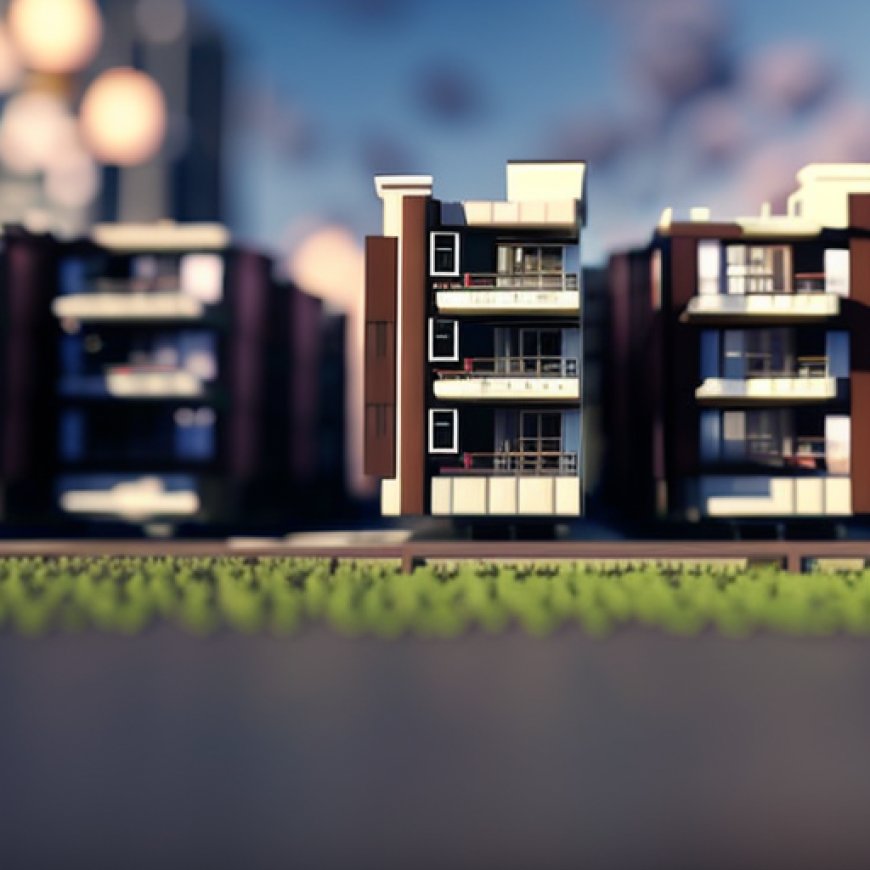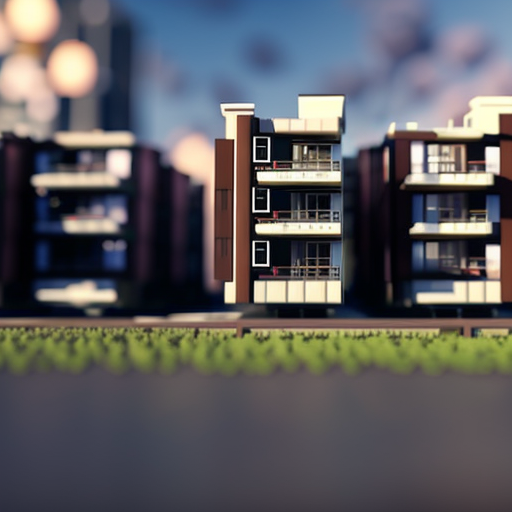Affordable housing goes 3D with efforts focused on building a hub in Greeley
Affordable housing goes 3D in Greeley, Colorado The Colorado Sun


There’s a lot of experimenting going on in Colorado in a quest to find how to make housing more affordable. The latest: 3D-printed homes.
On Friday, Iowa-based homebuilder Alquist 3D announced that it is moving its headquarters to Greeley to build a 3D-printed housing community, with lots of help from local government, a nonprofit, and Aims Community College.
Greeley: The Epicenter of 3D Printing
“Greeley is becoming the epicenter of 3D printing on the planet because it’s the only place that starting (Friday) will have production of 3D homes and infrastructure, assembling of 3D robots, creation of a new material, and a workforce development program,” said Zack Mannheimer, founder of Alquist, which printed its first 3D home with Habitat for Humanity in Virginia two years ago.
Partnerships and Incentives
About $4 million in incentives from the state and the city of Greeley contributed to Alquist picking Colorado and Greeley over six other states. Mannheimer also credited the support from the college in building a training program as the key.
Reducing Cost and Carbon Footprint
“This will be the first of its kind for 3D printing in the nation,” he said. “And this is how we get young people back into the trades. This is how we reduce our carbon footprint in the construction process, which makes up about 14% of all global carbon emissions.”
Scaling the Concept
Through a partnership with Habitat for Humanity, Alquist plans to scale the Greeley concept so printing houses become cheaper and faster. The plan is to build around 100 3D-printed homes in the nonprofit organization’s Hope Springs community in Greeley, where Habitat committed to building 300 affordable homes in January.
Advantages of 3D Construction
There are other reasons why there’s support for 3D construction. For Alquist’s homes, “it reduces your overall utility bill by half (because) the walls are thermally broken so the energy usage is significantly lower,” he said. “And the homes are more sustainable. They don’t burn, they can stand up to most major storms. This is also how we stop the effects of our natural disasters from constantly having to rebuild communities.”
Workforce Development Program
The college plans to boost its existing 3D-printing curriculum with new courses in 3D printing for residential construction that will train students on Alquist’s 3D printer to build houses and to program the robots used to print the homes, said Dr. Russ Rothamer, Aims executive vice president. The existing program was geared more toward general computer-aided design and programming.
Construction Process
Alquist, which employs eight people, has a temporary office at the college but plans to open a facility where it’ll assemble the 3D-building robots to do the heavy lifting. The technology, much like an office 3D printer, creates objects one drop at a time by squirting out “ink.” On the much larger scale of building a house, the process looks more like a giant piping bag of cake frosting that squeezes out one extruded layer of concrete mix at a time.
Construction on the curbs and infrastructure is expected to begin next week. Mannheimer said in the spring, they’ll then print the wall slabs and then Habitat for Humanity would complete the rest of the house. An average home of less than 1,500 square feet is estimated to take less than 48 hours to print, though windows, doors are not 3D printed and are added later in the process.
Incentives and Job Creation
In addition to the $2.4 million in incentives from the city of Greeley, the state of Colorado approved a Job Growth Incentive Tax Credit of up to $1,097,242, which kicks in as Alquist creates up to 79 jobs with an average annual wage of $73,987. An additional $335,000 was also awarded as part of a strategic fund that is contingent on a matching amount from the city of Greeley, plus proof that Alquist has raised $1.5 million in capital for the project.
Future Expansion
Mannheimer said he expects to hire about 20 people in the next 36 months, with more hires anticipated through the workforce program created by the college.
SDGs, Targets, and Indicators Analysis:
1. Which SDGs are addressed or connected to the issues highlighted in the article?
- SDG 1: No Poverty – The article discusses the goal of making housing more affordable through 3D-printed homes.
- SDG 7: Affordable and Clean Energy – The article mentions that 3D-printed homes have thermally broken walls, resulting in lower energy usage.
- SDG 8: Decent Work and Economic Growth – The article highlights the creation of jobs and a workforce development program related to 3D printing for residential construction.
- SDG 9: Industry, Innovation, and Infrastructure – The article focuses on the use of 3D printing technology for building houses and infrastructure.
- SDG 11: Sustainable Cities and Communities – The article discusses the construction of a 3D-printed housing community and its potential to reduce the carbon footprint in the construction process.
- SDG 13: Climate Action – The article mentions that 3D-printed homes are more sustainable and can withstand major storms, contributing to disaster resilience.
2. What specific targets under those SDGs can be identified based on the article’s content?
- SDG 1.4: By 2030, ensure that all men and women, in particular, the poor and the vulnerable, have equal rights to economic resources, as well as access to basic services, ownership, and control over land and other forms of property. – The goal of making housing more affordable through 3D-printed homes can contribute to providing equal access to housing for all.
- SDG 7.2: By 2030, increase substantially the share of renewable energy in the global energy mix. – The use of 3D-printed homes with thermally broken walls can contribute to reducing energy consumption and promoting energy efficiency.
- SDG 8.5: By 2030, achieve full and productive employment and decent work for all women and men, including for young people and persons with disabilities, and equal pay for work of equal value. – The creation of jobs in the 3D printing industry and the workforce development program can contribute to achieving decent work and economic growth.
- SDG 9.4: By 2030, upgrade infrastructure and retrofit industries to make them sustainable, with increased resource-use efficiency and greater adoption of clean and environmentally sound technologies and industrial processes. – The use of 3D printing technology for building houses and infrastructure aligns with the goal of upgrading and making industries more sustainable.
- SDG 11.1: By 2030, ensure access for all to adequate, safe, and affordable housing and basic services and upgrade slums. – The goal of making housing more affordable through 3D-printed homes can contribute to ensuring access to adequate and affordable housing.
- SDG 13.1: Strengthen resilience and adaptive capacity to climate-related hazards and natural disasters in all countries. – The construction of 3D-printed homes that are more sustainable and resilient can contribute to strengthening resilience to climate-related hazards and natural disasters.
3. Are there any indicators mentioned or implied in the article that can be used to measure progress towards the identified targets?
- Indicator for SDG 1.4: Proportion of the population living in households with access to basic services, including housing.
- Indicator for SDG 7.2: Renewable energy share in the total final energy consumption.
- Indicator for SDG 8.5: Employment-to-population ratio by sex, age group, and persons with disabilities.
- Indicator for SDG 9.4: CO2 emissions per unit of value added in manufacturing industries.
- Indicator for SDG 11.1: Proportion of urban population living in slums, informal settlements, or inadequate housing.
- Indicator for SDG 13.1: Number of deaths, missing persons, and directly affected persons attributed to disasters per 100,000 population.
Table: SDGs, Targets, and Indicators
| SDGs | Targets | Indicators |
|---|---|---|
| SDG 1: No Poverty | 1.4: By 2030, ensure that all men and women, in particular, the poor and the vulnerable, have equal rights to economic resources, as well as access to basic services, ownership, and control over land and other forms of property. | Proportion of the population living in households with access to basic services, including housing. |
| SDG 7: Affordable and Clean Energy | 7.2: By 2030, increase substantially the share of renewable energy in the global energy mix. | Renewable energy share in the total final energy consumption. |
| SDG 8: Decent Work and Economic Growth | 8.5: By 2030, achieve full and productive employment and decent work for all women and men, including for young people and persons with disabilities, and equal pay for work of equal value. | Employment-to-population ratio by sex, age group, and persons with disabilities. |
| SDG 9: Industry, Innovation, and Infrastructure | 9.4: By 2030, upgrade infrastructure and retrofit industries to make them sustainable, with increased resource-use efficiency and greater adoption of clean and environmentally sound technologies and industrial processes. | CO2 emissions per unit of value added in manufacturing industries. |
| SDG 11: Sustainable Cities and Communities | 11.1: By 2030, ensure access for all to adequate, safe, and affordable housing and basic services and upgrade slums. | Proportion of urban population living in slums, informal settlements, or inadequate housing. |
| SDG 13: Climate Action | 13.1: Strengthen resilience and adaptive capacity to climate-related hazards and natural disasters in all countries. | Number of deaths, missing persons, and directly affected persons attributed to disasters per 100,000 population. |








